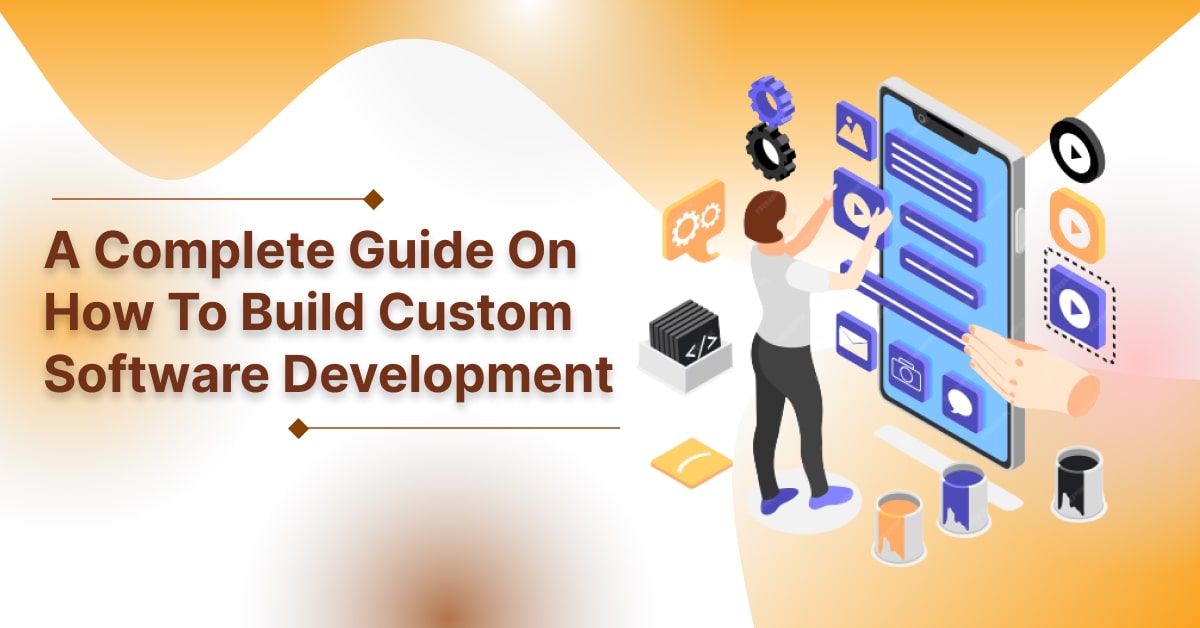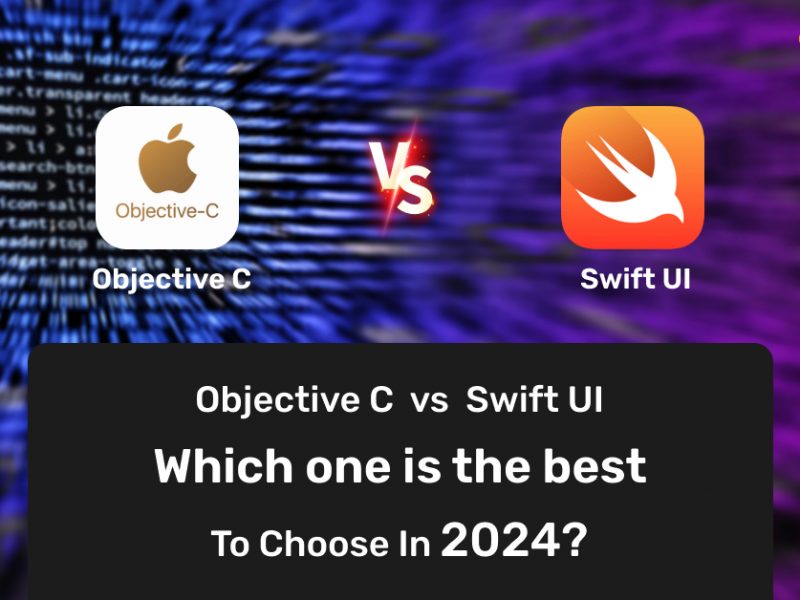Last updated on January 29th, 2024 at 11:58 am
In the digital era, companies increasingly identify the significance of customized software solutions to meet their unique needs and increase their competitive edge. build Custom software development provides a personalized approach for developing software apps from scratch or modifying current ones to fit specific needs precisely.
This comprehensive resource will cover everything you need about custom software development, including its benefits, key stages, best practices, and challenges. Whether you are a business owner or tech enthusiast, this guide will equip you with the understanding to embark on an effective custom software development guide.
What is Custom Software Development?
Custom software development is illustrated as the procedure of developing software apps or programs particularly customized for meeting the unique needs of a specific business, organization, or individual. It considers the coding, designing, testing, and deploying customized software solutions for identifying the client’s requirements, workflows, or challenges.
Unlike off-the-shelf software pre-built and accessible for general use, custom software is built from scratch to offer a precise solution to a particular issue. It is commonly created by a team of software developers or a custom software development company, either outsourced or in-house.
Why Should Your Organization Choose Custom Software Development?
Custom software can greatly benefit your business when designed well and carefully. It helps you meet your unique business requirements effectively. Let’s look at how it can accelerate growth and help your organization to stay ahead of the competition.
Let’s check out some of the custom software development features.
Improved Efficiency Through Unique Solutions
Today, many businesses are increasingly getting custom software development as it is precisely designed to suit your business needs perfectly.
Each company has unique needs, so a unique solution is required to serve it best. Personalized software will provide all the features and functionalities your organization needs, improving efficiency and productivity.
Enhanced Scalability
Your organization’s needs change with its growth and time. As your business grows, new needs will arise with that. In such a scenario, custom software helps you manage things.
A custom application can develop and adapt to your changing needs. When building your software, developers will assess your future needs and integrate them into the application, which will help you adapt to future needs.
Seamless and Cost-Effective Integration
If the standard software does not suffice for your organization, you must choose the custom solution to work smoothly and run your existing infrastructure seamlessly, leading to additional costs.
Custom software can be developed to incorporate existing and intended applications and infrastructure. It boosts efficiency, productivity, and scope of real-time conversation between various systems.
A Great Lift in your Competitive Edge
The best way to have an edge over your competitors is to work with custom applications instead of standard programs. Custom application speeds up your work incredibly, making your system run faster, smoother, and error-free.
It helps make you more efficient in solving problems better than your competitors, as your tech platform meets your business needs perfectly. Moreover, custom software allows you to work smartly, removing outdated processes and providing a competitive edge.
Hassle-Free Support and Maintenance
When you use a tech platform, you may need assistance fixing bugs or some updates to run it smoothly. Off-the-shelf software usually doesn’t have any support assistance, while custom software comes with great support.
Custom Software Development Services provider provides effective after-development support as they have set that reputation in the industry and possess vast experience. Therefore, they offer a great support and maintenance facility.
Custom Software Development Process
The custom software development process commonly considers a series of steps. It guides the creation, implementation, and maintenance of software systems.
While different methodologies and frameworks are available, one highly used approach is the software development life cycle, which considers the six main stages.
Let’s evaluate the six processes in depth.
Requirements Gathering and Analysis
The initial step considers comprehending and documenting the software system’s needs. It includes collecting data from the stakeholders, addressing their requirements, and illustrating the project’s goals.
The software requirement specification (SRS) document outlines the functional and non-functional needs of the software.
Design
Under the designing stage, the architectural and structural elements of the software are planned. The requirements collected in the past step are transformed into the design document.
It specifies the system’s overall structure, user interface, data flow, module interactions, and algorithms. This step considers addressing the hardware and software needs, choosing feasible techs, and developing the prototypes or mock-ups.
Implementation of Coding
This step considers writing the software’s actual code according to design specifications. Developers and programmers follow the coding standards and best practices for translating the design into executable code.
This step considers the tasks like creating modules, integrating elements, and executing the data algorithms and structures.
Testing
Testing is a significant step in software development that ensures the software functions as intended and accomplishes the specified needs. It considers implementing different test cases such as unit testing (testing individual elements), integration testing (testing the interaction between components), system testing (testing the whole system), and user acceptance testing (testing by end-users).
Bugs and issues identified during testing are tracked, reported, and fixed.
Deployment
Under the deployment step, the software is installed and made operational in the target environment. It considers configuring hardware and software elements, setting up the databases, and ensuring compatibility with the target system.
It may consider user training, data migration, and documentation preparation. The software is released to end-users or customers, and feedback is gathered for further enhancements.
Maintenance
After deploying the software, the maintenance phase starts. It considers monitoring the software’s performance, identifying the user-reported concerns (bugs), and making required enhancements and modifications.
Maintenance can be corrective (fixing defects), adapting (flexible to changes in the environment), preventive (assessing and improving potential issues), and perfective (enhancing performance or usability). This step continues during the software lifecycle to ensure its security, reliability, and continuous enhancement.
How Much Does It Cost to Develop a Custom Software?
How much does it cost to make custom software? This question doesn’t have a clear answer. However, the cost of software development in 2023 is affected by many things, which makes it hard to get a reasonable price.
The cost can be anywhere from $20,000 to $500,000, depending on the technology used. Companies offer mobile options for the next generation for less than the average price on the market.
Factors Affecting the Custom Software Development Cost
The cost of making custom software can change greatly based on several things. Let’s talk about the main things that can change how much custom software development costs:
Target Platforms
The cost of creation may be affected by the systems that are chosen. Making software for just one platform, like a web app or a mobile app, might be cheaper than simultaneously making software for many platforms.
The total cost can go up because each topic needs its own set of skills, development methods, and tests.
Product Size & Scale
The size and scope of software goods have a big impact on how much they cost to make. Costs increase as projects become more complicated because they need more resources, work, and time.
The total cost can change based on the number of features, functions, and sections that need to be built and the amount of data that needs to be processed.
Complexity of Software
A big part of the cost is how hard the software is to use. When you think about complex software solutions, like those with complicated formulas, advanced features, improved business logic, or interaction with an outside system, they may need more development knowledge and time, which drives up the cost.
Infrastructure and Connected APIs
The cost of software can be affected by the technology it needs, such as database management, hosting, and setting up servers. Also, if the software needs to use third-party APIs or services, it may be more expensive and difficult to use because of the extra work, testing, and licensing fees that come with them.
UI/UX Design Complexity
The cost may change based on how hard the UI and UX design is. More design changes, testing, and development work may be needed to make highly customized, visually appealing interfaces or engaging and easy-to-use user experiences, which could lead to higher costs.
Geographical Location
The cost may be affected by where the production team meets. The cost of living, wages, and other economic factors vary from country to country and region to area. For example, hiring coders from some foreign places may be cheaper than doing the work locally.
Integrations
The cost may change depending on how hard it is to connect the software to other systems, databases, or third-party services. Adding complicated old systems or private APIs may require developers’ work and time, which will raise costs.
Hiring Model
The overall cost can be affected by the hiring plan that is chosen. In-house growth, contracting, and staff addition are some of the different ways that people are hired. Costs like fees, wages, management, and equipment must be thought about for each plan. In some cases, they may be able to save money by hiring extra staff or sharing work.
Development Team Composition
The cost may be affected by the make-up of the working team. The costs can change depending on the group size, the level of experience and skill of the developers, and the need for specialized roles like UI/UX designers, architects, and quality assurance. Resources that are very expert or skilled may charge more, which will change the total cost of the job.
It’s important to remember that these things are always changing and are linked in some way, which can affect other things. It could affect how much custom software creation costs in the long run. Because of this, it is important to carefully consider and rank these factors based on the software project’s wants and goals.
Technology Stacks for Custom Software Development
When making custom software, there are a number of important tech stacks that can be used to make both strong and scalable apps. Let’s talk about some custom software development technology.
LAMP (Linux, Apache, MySQL, PHP)
It’s a popular open-source stack that’s widely used to build websites. The stack comprises of Linux as the operating system, MySQL as the database management system, Apache as the web server, and PHP as the programming language used to write code that runs on the server. It allows for the creation of affordable, interactive websites and web applications.
MEAN (MongoDB, Express.js, AngularJS, and Node.js)
MEAN is defined as a modern full-stack JavaScript framework. It sees MongoDB as the NoSQL database, Express.js as the framework for building web apps, AngularJS as the framework for building front ends, and Node.js as the environment for running code on the server. It lets writers make JavaScript apps from start to finish, making real-time and single-page apps (SPAs) possible.
MERN (MongoDB, Express.js, React, and Node.js)
It is a full-stack JavaScript system that works like MEAN. For front-end development, it uses React.js instead of AngularJS. MongoDB is the database for the MERN stack, Express.js is the back-end framework, React is the front-end code, and Node.js is the server-side software.
A lot of people use it to make dynamic and responsive computer apps.
.NET stack (ASP.NET, C#, SQL Server)
The .NET stack developed by Microsoft is highly used to create enterprise-level web apps and services. It sees ASP.NET as the platform for building web apps, C# as the language for writing code, and SQL Server as the method for managing databases.
With the.NET stack, you can make safe, flexible apps and use various libraries, tools, and frameworks on the Microsoft platform.
Java stack (Java, Spring, and Hibernate)
The Java Stack is a developed and widely used set of technologies for making custom software. It looks at the computer language Java, the Sprint framework for creating business apps, and Hibernate as an object-relational mapping (ORM) method for connecting databases.
It makes it easier to build complicated and scalable software solutions that are scalable, reliable, and have help from a larger group.
Conclusion
Well, you understand what custom software development is and how it can benefit your business; you need to figure out your requirements for a custom application to make the most of it.
Enterprise Software Development Solutions Company can help you find the hidden potentials of your organization and plan and build a customized solution effectively for your business. It enables you to develop a great solution to boost your employees’ performance and increase your business’s revenue.



Naveen Khanna is the CEO of eBizneeds, a company renowned for its bespoke web and mobile app development. By delivering high-end modern solutions all over the globe, Naveen takes pleasure in sharing his rich experiences and views on emerging technological trends. He has worked in many domains, from education, entertainment, banking, manufacturing, healthcare, and real estate, sharing rich experience in delivering innovative solutions.






